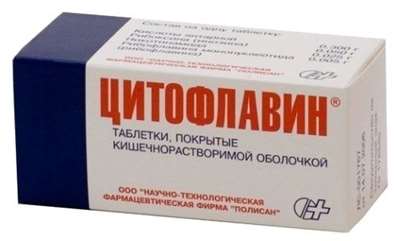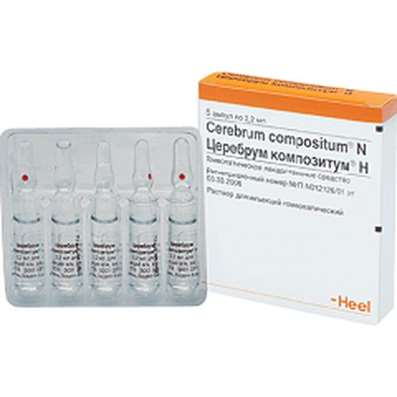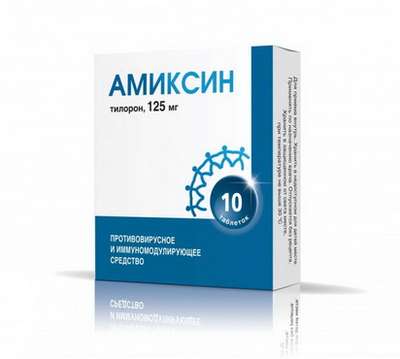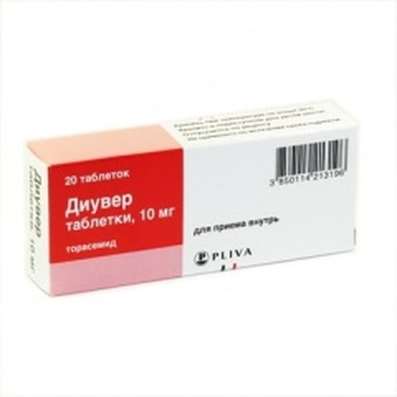Instruction for use: Octreotide
I want this, give me price
ATX Code H01CB02 Octreotide
Active substance: Octreotide
Pharmacological group
Somatostatin analogue synthetic [Hormones of the hypothalamus, pituitary gland, gonadotropins and their antagonists]
Nosological classification (ICD-10)
I85.0 Varicose veins of the esophagus with bleeding
Bleeding from the esophagus, Bleeding from esophageal varices
K25 Gastric ulcer
Helicobacter pylori, Pain syndrome in gastric ulcer, Pain syndrome in gastric ulcer and duodenal ulcer, Inflammation of the gastric mucosa, Inflammation of the gastrointestinal mucosa, Benign gastric ulcer, The disease of the stomach and duodenum, asotsiirovannoe with Helicobacter pylori, Aggravation gastroduodenita on the background of peptic ulcer, Exacerbation of peptic ulcer, The aggravation of gastric ulcer, The organic gastrointestinal disease, Peptic ulcer of the stomach and duodenum, Postoperative gastric ulcer, Recurrent ulcers, Symptomatic gastric ulcers, Chronic inflammatory disease of the upper gastrointestinal tract, associated with Helicobacter pylori, Helicobacter pylori eradication, Erosive and ulcerative lesions of the stomach, Erosive lesions of the stomach, The erosion of the gastric mucosa, Peptic ulcer disease, Stomach ulcer, Gastric lesion, Ulcerative lesions of the stomach, Symptomatic ulcers of the stomach and duodenum
K26 Duodenal Ulcer
Pain with duodenal ulcer, Pain syndrome in gastric ulcer and duodenal ulcer, The disease of the stomach and duodenum, asotsiirovannoe with Helicobacter pylori, Exacerbation of peptic ulcer, The worsening of duodenal ulcer, Peptic ulcer of the stomach and duodenum, Relapse of duodenal ulcers, Symptomatic ulcers of the stomach and duodenum, Helicobacter pylori eradication, Erosive and ulcerative lesions of the duodenum, Erosive-ulcerative lesions of duodenal ulcers associated with Helicobacter pylori, Erosive lesions of the duodenum, Duodenal ulcer, Ulcerative lesions of the duodenum]
K74 Fibrosis and cirrhosis of the liver
Otecno-ascitic syndrome with cirrhosis of the liver, Inflammatory liver disease, Precircrotic condition, Cystic fibrosis of the liver, Cirrhotic and precircotic state, Cirrhosis with portal hypertension, Cirrhosis of the liver with portal hypertension and edematous-ascitic syndrome, Cirrhosis of the liver with portal hypertension, Cirrhosis of the liver with ascites and edema, Cirrhosis of the liver with ascites, Cirrhotic ascites
K85 Acute pancreatitis
Acute pancreatitis, Pancreatitis, Pancreatitis hemorrhagic, Pancreatitis acute, Sepsis pancreatogenic, Acute necrotic pancreatitis, Pancreatitis edematous
K92.2 Gastro-intestinal bleeding, unspecified
Gastric and intestinal bleeding, Acute bleeding from the upper gastrointestinal tract, gastrorrhagia, Gastrointestinal bleeding, Intraoperative abdominal bleeding, enterorrhagia, Bleeding in the upper digestive tract, Gastrointestinal bleeding, Bleeding from the upper gastrointestinal tract, Bleeding from the gastrointestinal tract, Intraoperative bleeding abdominal, Recurrent bleeding in the digestive tract, Diagnosis of bleeding from the small intestine, peptic ulcer bleeding, Mallory-Weiss syndrome, Recurrent bleeding from peptic ulcers, Bleeding stomach
Z100 * CLASS XXII Surgical practice
Abdominal surgery, adenomectomy, Amputation, Coronary angioplasty, Angioplasty of the carotid arteries, Antiseptic skin treatment for wounds, Antiseptic Hand, Appendectomy, atherectomy, Balloon coronary angioplasty, Vaginal hysterectomy, The coronary bypass, Interventions in the vagina and cervix, Interventions on the bladder, Intervention in the mouth, Restoration and reconstructive surgery, Hand hygiene of medical personnel, Gynecologic surgery, Gynecological intervention, Gynecological surgery, Hypovolemic shock during operations, Disinfection of purulent wounds, Disinfection of wounds edges, Diagnostic intervention, Diagnostic procedures, Cervical Diathermocoagulation, Long-surgery, Replacing the fistula catheters, Infection in orthopedic surgery, Artificial heart valve, cystectomy, Short-term outpatient surgery, Short-term operation, Short surgical procedures, Krikotireotomiya, Blood loss during surgery, Bleeding during surgery and in the postoperative period, Kuldotsentez, laser photocoagulation, laser coagulation, retinal laser coagulation, Laparoscopy, Laparoscopy in Gynecology, CSF fistula, Small gynecological operations, Small surgical procedures, Mastectomy and subsequent plastic, mediastinotomy, Microsurgical operations on the ear, Mukogingivalnye operation, suturing, Minor surgery, neurosurgical operation, Immobilization of the eyeball in ophthalmic surgery, testectomy, pancreatectomy, Perikardektomiya, The period of rehabilitation after surgery, The period of, convalescence after surgery, Percutaneous transluminal coronary angioplasty, Pleural thoracentesis, Pneumonia postoperative and posttraumatic, Preparation for surgical procedures, Preparation for surgery, Preparation of the surgeon's hands before surgery, Preparation of the colon for surgical procedures, Postoperative aspiration pneumonia in neurosurgical and thoracic surgery, Postoperative nausea, Postoperative bleeding, postoperative granuloma, postoperative shock, The early postoperative period, myocardial revascularization, Radiectomy, gastric Resection, bowel resection, uterine Resection, liver Resection, enterectomy, Resection of part of the stomach, Reocclusion of the operated vessel, Bonding tissues during surgical procedures, Removal of sutures, Condition after eye surgery, Condition after surgery, Condition after surgery in the nasal cavity, Condition after gastrectomy, Status after resection of the small intestine, Condition after tonsillectomy, Condition after removal of the duodenum, Condition after phlebectomy, Vascular surgery, Splenectomy, Sterilization of surgical instruments, Sterilization of surgical instruments, sternotomy, Dental surgery, Dental intervention in periodontal tissues, strumectomy, Tonsillectomy, Thoracic surgery, total gastrectomy, Transdermal intravascular coronary angioplasty, Transurethral resection, Turbinektomiya, Removal of a tooth, cataract surgery, Removal of cysts, tonsillectomy, Removal of fibroids, Removing the mobile primary teeth, Removing polyps, Removing broken tooth, Removal of the uterus body, Removal of sutures, Urethrotomy, Fistula likvoroprovodyaschih ways, Frontoetmoidogaymorotomiya, Surgical infection, Surgical treatment of chronic limb ulcersm, Surgery, The surgery in the anal area, The surgery on the colon, Surgical practice, The surgical procedure, Surgical interventions, Surgery on the gastrointestinal tract, Surgical procedures on the urinary tract, Surgical procedures on the urinary system, Surgical intervention of the genitourinary system, Surgical procedures on the heart, Surgical manipulation, surgery, Surgery on the veins, Surgical intervention, Vascular surgery, Surgical treatment of thrombosis, cholecystectomy, Partial gastric resection, transabdominal hysterectomy, Percutaneous transluminal coronary angioplasty, Percutaneous transluminal angioplasty, Coronary artery bypass, tooth Extirpation, Extirpation of milk teeth, pulpectomy, pulsative cardiopulmonary bypass, tooth Extraction, teeth Extraction, cataract extraction, Electrocoagulation, endourological intervention, episiotomy, Etmoidotomiya, Complications after tooth extraction
Composition
Solution for intravenous and subcutaneous injection 1 amp.
active substance:
Octreotide 50 μg/ 100 μg
Auxiliary substances: sodium chloride - 9/9 mg; Water for injection - up to 1/1 ml
Description of dosage form
Clear, colorless, odorless liquid.
pharmachologic effect
The pharmacological action is somatostatin-like.
Pharmacodynamics
Octreotide is a synthetic analog of somatostatin, which has similar pharmacological effects, but a much longer duration of action. Octreotide inhibits the secretion of growth hormone (GH), both pathologically elevated, and caused by arginine, exercise and insulin hypoglycemia. The drug also inhibits the secretion of insulin, glucagon, gastrin, serotonin, both pathologically elevated, and caused by eating; Also suppresses secretion of insulin and glucagon stimulated with arginine. Octreotide suppresses the secretion of thyrotropin, caused by thyroidiberin.
In patients with pancreas surgery, the use of octreotide before surgery, during and after it reduces the incidence of typical postoperative complications (eg pancreatic fistula, abscesses, sepsis, acute postoperative pancreatitis). When bleeding from varicose veins of the esophagus and stomach in patients with cirrhosis of the liver, the use of octreotide in combination with specific treatment (eg sclerosing and haemostatic therapy) leads to more effective stopping of bleeding and prevention of rebleeding.
Pharmacokinetics
After sc administration octreotide is quickly and completely absorbed. Cmax octreotide in plasma is achieved within 30 min. Binding to plasma proteins is 65%. The binding of octreotide with the formed elements of the blood is extremely insignificant. Vd is 0.27 l / kg. T1 / 2 after SC administration of octreotide is 100 minutes. After intravenous administration octreotide removal is carried out in 2 phases, with T1 / 2 - 10 and 90 minutes respectively. Most of the octreotide is excreted through the intestine, about 32% is excreted unchanged, by the kidneys.
The total clearance is 160 ml / min. In elderly patients, clearance decreases, and T1 / 2 increases. In severe chronic renal failure, the clearance decreases by a factor of 2.
Indications
Treatment of acute pancreatitis;
Stop bleeding with peptic ulcer of the stomach and duodenum;
Stop bleeding and prevent bleeding from varicose veins of the esophagus in patients with cirrhosis;
Prevention and treatment of complications after operations on the abdominal organs.
Contraindications
Hypersensitivity to octreotide or other components of the drug;
Children's age till 18 years.
With caution: cholelithiasis (cholelithiasis), diabetes, pregnancy, lactation.
pregnancy and lactation
The use of octreotide in pregnancy has not been studied. Octreotide should be used during pregnancy only if the intended benefit to the mother exceeds the potential risk to the fetus.
It is not known whether the drug enters the breast milk, so when using the drug during lactation, breastfeeding should be abandoned.
Side effects
From the gastrointestinal tract, pancreas, liver and gallbladder: possible - anorexia, nausea, vomiting, abdominal cramping, bloating, excess gas, liquid stool, diarrhea and steatorrhea. Although the release of fat with feces may increase, there is no indication that prolonged treatment with Octreotide can lead to the development of malabsorption (malabsorption). In rare cases, there may be phenomena reminiscent of acute intestinal obstruction.
There are isolated cases of acute hepatitis without cholestasis, as well as hyperbilirubinemia in combination with an increase in the activity of alkaline phosphatase, GGT, and to a lesser extent other transaminases.
Long-term use of Octreotide can lead to the formation of stones in the gallbladder.
From the CCC: in some cases - arrhythmia, bradycardia.
On the part of carbohydrate metabolism: there may be a violation of glucose tolerance after eating (due to suppression of insulin secretion), hypoglycemia; In rare cases with prolonged treatment, the development of persistent hyperglycemia is possible.
Local reactions: at the injection site, pain, itching or burning sensation, redness and swelling are possible (usually within 15 minutes).
Other: allergic reactions, alopecia.
Interaction
Octreotide reduces the absorption of cyclosporine, slows the absorption of cimetidine.
It is necessary to adjust the dosage regimen of concomitantly used diuretics, beta-adrenoblockers, CCB, insulin, oral hypoglycemic drugs.
With the simultaneous use of Octreotide and bromocriptine, the bioavailability of the latter increases.
Drugs metabolized by enzymes of the cytochrome P450 system and having a narrow therapeutic range of doses should be administered with caution.
Dosing and Administration
P / to, in / in (intravenously) (drip).
For the treatment of acute pancreatitis, the drug is given SC at a dose of 100 μg 3 times a day for 5 days. It is possible to appoint up to 1200 mcg / day with the use of an intravenous route.
To stop ulcers bleeding injected iv in a dose of 25-50 mkg / h in the form of intravenous infusions for 5 days.
To stop bleeding from the varicose-dilated veins, the esophagus is administered iv in a dose of 25-50 μg / h in the form of continuous intravenous infusions for 5 days. In elderly patients, there is no need to reduce the dose of Octreotide.
For the prevention of complications after operations on the pancreas, the first dose of 100-200 mcg is administered p / k 1-2 hours before laparotomy; Then after the operation, enter sc to 100-200 μg 3 times / day for 5-7 consecutive days.
Overdose
Symptoms: short-term loss of heart rate, a feeling of blood flow to the face, spasmodic pain in the abdomen, diarrhea, nausea, a feeling of emptiness in the stomach.
Treatment: symptomatic.
special instructions
In patients with diabetes mellitus receiving insulin, Octreotide may reduce the need for insulin.
If gallstones are detected before treatment, the question of the use of Octreotide is decided individually, depending on the ratio of the potential therapeutic effect of the drug and the possible risk factors associated with the presence of gallstones.
Gastrointestinal side effects may be reduced if Octreotide injections are done in the intervals between meals or at bedtime.
To reduce the phenomena of discomfort at the injection site, it is recommended to bring the drug solution before introducing it to room temperature and introduce a smaller volume of the drug. Several injections should be avoided in the same place at short intervals.
Effect on the ability to drive and other mechanisms. Some of the side effects of octreotide may adversely affect the ability to drive and other mechanisms that require increased concentration and speed of psychomotor reactions.
Form of issue
Solution for intravenous and subcutaneous injection 50, 100 μg / ml. 1 ml in ampoules of colorless glass with a color marking in the form of two green strips or in dark glass ampoules that have a ring of tension for dissection, or ampoules with a break point. At 5 amp. Are placed in a contour mesh package made of a PVC film. 1 or 2, the contiguous cell packs are placed in a pack of cardboard box.
Terms of leave from pharmacies
On prescription.
storage Conditions
In the dark place at a temperature of 8 to 25 ° C.
Keep out of the reach of children.
Shelf Life
5 years.
Do not use after the expiry date printed on the package.

 Cart
Cart





